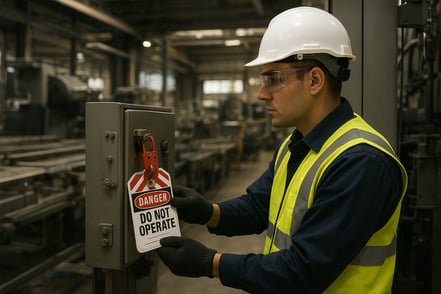|
In Part 1 of this blog post we looked at the four essential elements of DET solutions. In this part we'll unpack what these elements might mean in practice. That is, what market-ready DET solutions might look like, the types of features that are part of their offering, and why this matters. Immersive Self-AuthoringThe elements of Self-authoring & Experiential by Design suggest that likely solutions are any immersive self-authoring tool would fit this category well. Such a tool would be like a modern, easy-to-use eLearning creation tool, only it would enable the creation of digital experiential content. Of central importance here would be a solution that can be used by lay people and not require specialist skills and also one that creates highly interactive and immersive content types. Additionally, any digital training tool must be able to integrate with existing learning technology systems: at a minimum, it must be able to send learner data to an LMS and allow a learner to access content from within the LMS or LXP (e.g. via SCORM or xAPI integration). AccessibilityFrom a content accessibility point of view, solutions in this category need to meet the market where it's at, but also allow organisations to 'future-proof' their investment. One way to do this is by allowing content to be accessible on the hardware they have today (e.g. computers) but also be compatible with the hardware of the future (e.g. VR headsets). In essence, this means creating content once and knowing it will be usable with future hardware. Experiential TrainingAlthough most VR based immersive content will be much more engaging than eLearning, this does not mean it will be automatically pedagogically effective. The content created will need to leverage the newfound level of realism and interactivity which is possible within this Digital Experiential Training category (e.g. leveraging 360 degree imagery based or 3D model base experiences). This means that the content should have higher levels of realism (visual, mechanical, social realism, etc.) and provide the learner with a way to shape the training experience (choice points and feedback loops). Ideally, a solution would allow for the use of multiple different immersive and interactive content types within one experience, given that different content modalities (e.g. 3D models/environments, 360 imagery) have each been found to have their distinct advantages from a training point of view. Additionally, the option for collaborative or individual learning should be standard. Most workplace roles are highly collaborative and, as such, training which aims to be realistic will sooner or later require collaborative approaches. Self-Authoring vs. Service basedAs was stated in the essential elements, we see the Digital Experiential Training category as bringing about a greater empowerment of L&D professionals and organisations to deliver training value. This suggests that solutions which are based on service provision (e.g. ‘Do It For You’ models) are not a viable path in the long term. There are numerous VR creation agencies offering a service first approach to content creation, but such an approach is unlikely to be cost-effective or flexible enough and, whilst appropriate in some instances, does not belong in this new category. Similarly, any so called 'low-code' solutions, which still require specialist skills are not in a position to truly empower the average SME who carries the expertise within the organisation. Consequently, such solutions don't fit with the vision presented here, which takes the view that development of an in-house capability is the best way to eliminate the long list of compromises in training modalities outlined earlier. |




Comments